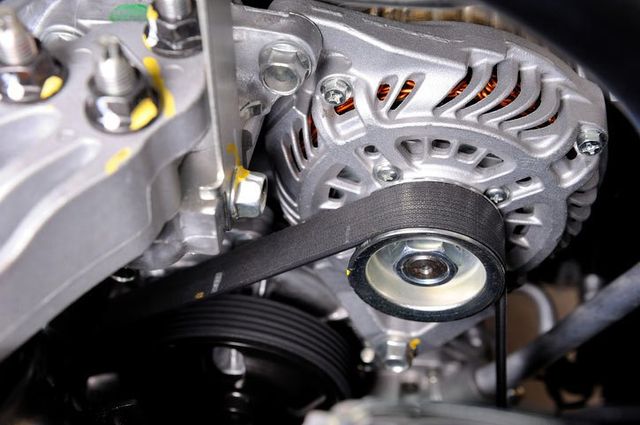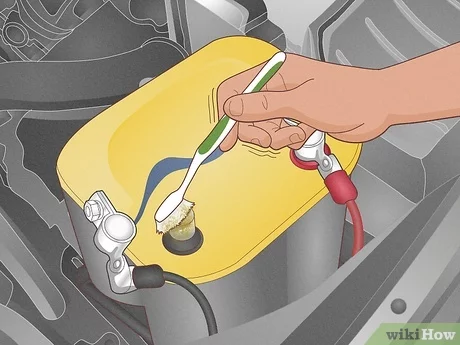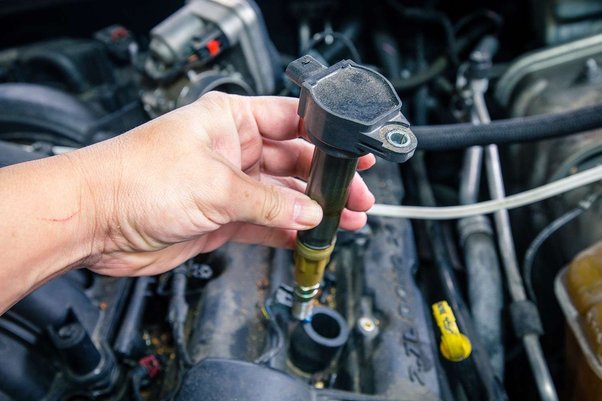Signs You Need a Coolant Flush
Signs you need a coolant flush include overheating engines and visible sediment in the coolant. A coolant flush prevents potential overheating and engine damage.
Maintaining your vehicle’s health is crucial, and one essential aspect is the cooling system. Your car relies on coolant to prevent overheating, but over time, this fluid can become contaminated. A coolant flush is a maintenance procedure that involves replacing the old coolant with fresh fluid, ensuring your engine stays cool and operates efficiently.
Ignoring the need for a coolant flush can lead to increased wear on the engine, reduced fuel efficiency, and the risk of serious mechanical failures. Recognizing the signs that your vehicle needs this service is key to keeping it in top condition and avoiding costly repairs down the line. Regularly checking for these symptoms can save you time and money, while also extending the life of your car’s engine.
Introduction To Coolant’s Role In Your Vehicle
Coolant plays a crucial part in your vehicle’s performance. It contributes to engine efficiency and longevity. Understanding coolant is vital to maintaining your car’s health.
What is Coolant?
What Is Coolant?
Coolant, also known as antifreeze, is a liquid mixture. It’s a blend of water and special chemicals. It prevents engines from freezing in winter and overheating in summer.
- Coolant color: Green, orange, red, or yellow.
- Main ingredients: Ethylene glycol or propylene glycol.
Function Of Coolant In Engine Regulation
Coolant controls engine temperature. It moves heat away from the engine. This process stops the engine from getting too hot.
| Coolant Functions |
|---|
| Heat absorption from engine |
| Heat transfer to radiator |
| Preventing rust and scale |
| Lubricating the water pump |

Credit: www.greasepro.com
Recognizing The Symptoms Of Old Or Contaminated Coolant
Your vehicle’s coolant is critical for maintaining optimal engine temperature. But over time, coolant can become old or contaminated, leading to a host of problems. How do you know it’s time for a coolant flush? Look out for these clear signs:
Visible Contamination And Color Change
Check your coolant’s appearance. Fresh coolant usually has a bright green hue. It may also be orange or pink, depending on the type. When it starts to lose its color or looks murky, it’s a sign:
- Color shifts from its original hue.
- Presence of floating particles or debris.
- Coolant thickens or becomes sludgy.
These changes suggest a contaminant buildup or the presence of rust, signaling the need for a flush.
Unusual Odors From The Engine Area
Notice any strange smells coming from the engine? A sweet, syrupy odor can point to a coolant issue. This scent indicates that the coolant is burning within the engine compartment, which should never happen. Leaks or overheating engines can cause this unpleasant symptom:
- Sweet or chemical-like smell.
- Odors become stronger near the radiator or under the hood.
This can swiftly lead to engine damage if not addressed through a coolant flush.
Engine’s Performance Red Flags
Engine’s Performance Red Flags are telltale signs your vehicle may be crying out for a coolant flush. Ignoring these signals can lead to costly repairs. A healthy cooling system keeps your engine at an optimal temperature. Look out for the following warning signs that suggest your engine’s coolant system might need attention.
Overheating Engine Troubles
An overheating engine is a clear alarm bell. Your dashboard may show the temperature gauge spiking into the red zone. This indicates your engine’s struggling to stay cool. A coolant flush might be the fix it needs.
- Steam from the hood: Means the engine’s too hot.
- Engine smells hot: Detect a sweet, syrupy odor? Your coolant’s leaking.
- Thumping sounds: May suggest overheating and boiling coolant.
Inconsistent Cabin Heating Issues
Notice your heater not working like before? It could be a sign of coolant troubles. Sometimes the heat may blow cold. Or it won’t work at all. This inconsistency often means the coolant isn’t circulating properly. It’s time for a check-up.
| Heating Issue | Possible Cause | Action Needed |
|---|---|---|
| No heat in cabin | Poor coolant circulation | Coolant flush may be required |
| Cold air blowing | Blocked heater core | Inspection and flush needed |
Physical Indicators On Your Vehicle
Recognizing the signs that your vehicle needs a coolant flush can save you from costly repairs. Physical signs are easy to spot if you know what to look for. Routine checks under the hood and around your vehicle can reveal these signs. Let’s explore the physical indicators that suggest your car might need a coolant flush.
Coolant Leaks Under The Car
One clear signal that you need a coolant flush is liquid pooling under your vehicle. This could be a coolant leak. Coolant typically appears as a bright green, pink, or yellow fluid. It’s vital to address leaks immediately as they can lead to engine overheating.
- Persistent puddles under the car
- Brightly colored fluid on the ground
- Sweet smell indicating antifreeze present
Radiator Rust And Sediment Accumulation
Rust on your radiator or sediment in the coolant can hint at corrosion problems. This can choke your cooling system and reduce its efficiency. Visually inspect the radiator and the coolant reservoir. If you spot discoloration or particles, it may be time for a flush.
| Sign | Indication |
|---|---|
| Discoloration on radiator | Rust and corrosion present |
| Particles in coolant reservoir | Possible sediment accumulation |
The Impact Of Neglecting A Coolant Flush
Your car’s coolant system plays a vital role in keeping the engine at the right temperature. Think of it as the unsung hero of your vehicle’s engine. Over time, old coolant loses its effectiveness and can’t protect your engine as well. Ignoring timely coolant flushes risks serious damage to your engine and your wallet.
Long-term Engine Damage Risks
Coolant, also known as antifreeze, absorbs heat from the engine and dispels it through the radiator. Old coolant becomes acidic. It can actually start to eat away at your engine’s internal parts. This can lead to corrosion, leaks, and a complete engine failure. Regular flushes remove corrosive fluids before they cause harm.
- Corrosion and rust can form inside the cooling system.
- Old coolant can cause clogs and engine overheating.
- Poor heat distribution can easily warp engine components.
Increased Vehicle Downtime And Repair Costs
Neglecting a coolant flush doesn’t just hurt your engine. It can lead to increased down-time and hit your wallet with big repair bills. With a clogged or inefficient cooling system, your engine works harder. You might find yourself often visiting the repair shop with these concerns:
- Higher temperatures, causing your vehicle to overheat.
- Increased wear on engine components leads to more frequent repairs.
- Unexpected breakdowns mean more time without a vehicle.
Regular coolant flushes maintain your engine’s cooling effectiveness and can save hundreds, if not thousands, of dollars in repairs.
Best Practices For Coolant Maintenance
Best Practices for Coolant Maintenance are crucial for any vehicle’s health and performance. A well-maintained cooling system keeps your engine at the right temperature and prevents overheating. Follow these guidelines to ensure your car’s radiator and cooling system continue to operate efficiently.
Coolant Flush Intervals For Optimal Performance
To maintain peak performance, know when to flush your coolant. Each vehicle has specific requirements, often found in the owner’s manual. Neglect can lead to overheating, corrosion, and engine damage. Here’s a basic timetable:
- Every 30,000 miles or 5 years for most cars.
- 40,000 to 50,000 miles for extended life coolant.
- Check annually for color, consistency, and debris.
Choosing The Right Coolant For Your Vehicle
Selecting the correct coolant is vital for your car’s wellbeing. Mismatched coolant can cause corrosion and poor performance. Here’s how to choose:
| Type of Coolant | Vehicle Compatibility | Key Benefits |
|---|---|---|
| IAT (Inorganic Additive Technology) | Older vehicles, pre-2000s | Prevents rust and corrosion |
| OAT (Organic Acid Technology) | GM, some European models | Longer lasting, fewer flushes required |
| HOAT (Hybrid Organic Acid Technology) | Chrysler, Ford, some European cars | Combines best features of IAT and OAT |
Check your vehicle’s manual or reach out to a professional to verify the right type. Always ensure the coolant is appropriate for your vehicle’s engine to avoid potential damage.

Credit: threebaygarage.com
Frequently Asked Questions For Signs You Need A Coolant Flush
What Are Signs Your Car Needs A Coolant Flush?
A car may need a coolant flush if the engine consistently overheats, the coolant looks rusty or contains debris, or if the heater doesn’t work well. Frequent temperature changes and poor performance are also telltale signs.
How Often Should You Perform A Coolant Flush?
It’s generally recommended to perform a coolant flush every 30,000 miles or every 5 years, whichever comes first. However, always consult your vehicle’s owner manual for manufacturer-specific guidance.
Can A Coolant Flush Improve Engine Performance?
Yes, a coolant flush can improve engine performance by removing rust and scale deposits, lubricating the water pump, and ensuring the radiator works effectively. It helps maintain optimal engine temperature.
What Happens If You Don’t Flush Your Coolant?
Not flushing your coolant can lead to engine overheating, reduced heating efficiency, corrosion, and potential engine damage. Old coolant loses its anti-corrosive properties, increasing the risk of costly repairs.
Conclusion
Recognizing these signs for a coolant flush is crucial for your vehicle’s health. Tackle overheating, poor performance, and potential engine damage early. Ensure your car runs smoothly by scheduling regular maintenance. Consult your mechanic at the first hint of trouble.
Keep your engine cool and efficient with timely coolant flushes.






